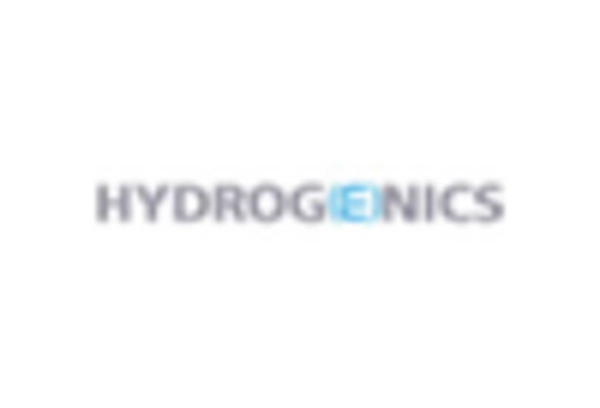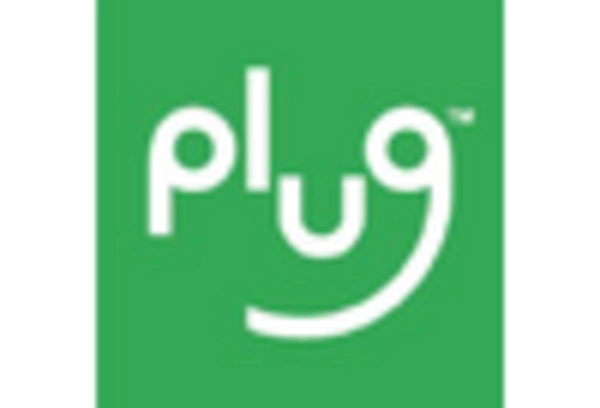Government Support and Policies
Government support plays a crucial role in the Fuel Cell Balance Of Plant Market, as various nations implement policies aimed at promoting clean energy technologies. Incentives such as tax credits, grants, and subsidies are being introduced to encourage investment in fuel cell technologies. For example, recent legislation in several countries has allocated significant funding for research and development in fuel cell applications. This support not only fosters innovation but also helps to lower the cost of fuel cell systems, making them more accessible to consumers and businesses alike. As a result, the market is expected to witness a steady increase in adoption rates, driven by favorable regulatory frameworks.
Growing Applications in Transportation
The Fuel Cell Balance Of Plant Market is witnessing a notable expansion in applications within the transportation sector. Fuel cells are increasingly being utilized in various modes of transport, including buses, trucks, and trains, due to their ability to provide zero-emission solutions. The market for fuel cell vehicles is projected to reach over 1 million units by 2030, reflecting a growing acceptance of hydrogen as a viable alternative to traditional fuels. This shift is supported by advancements in hydrogen production and distribution infrastructure, which are essential for the widespread adoption of fuel cell technologies in transportation. Consequently, the demand for balance of plant components is expected to rise significantly.
Rising Demand for Clean Energy Solutions
The Fuel Cell Balance Of Plant Market is significantly influenced by the rising demand for clean energy solutions. As concerns over climate change and environmental sustainability intensify, industries are increasingly seeking alternatives to fossil fuels. Fuel cells, which produce electricity with minimal emissions, are emerging as a preferred choice for various applications, including stationary power generation and backup power systems. The market is anticipated to grow as businesses and governments alike prioritize investments in renewable energy sources. This trend is further supported by the increasing availability of hydrogen production technologies, which are essential for the development of a sustainable fuel cell ecosystem.
Technological Advancements in Fuel Cell Systems
The Fuel Cell Balance Of Plant Market is experiencing a surge in technological advancements that enhance the efficiency and reliability of fuel cell systems. Innovations in components such as pumps, compressors, and heat exchangers are pivotal in optimizing performance. For instance, the integration of advanced materials and control systems has been shown to improve the overall energy conversion efficiency of fuel cells. As a result, the market is projected to grow at a compound annual growth rate of approximately 15% over the next five years. This growth is driven by the increasing demand for cleaner energy solutions and the need for efficient energy storage systems, which are essential for the widespread adoption of fuel cell technologies.
Increased Investment in Renewable Energy Technologies
Investment in renewable energy technologies is a key driver for the Fuel Cell Balance Of Plant Market. As the world transitions towards sustainable energy solutions, funding for fuel cell research and development is on the rise. This influx of capital is facilitating advancements in fuel cell technology, leading to improved performance and reduced costs. According to recent estimates, investments in fuel cell technologies are expected to exceed $10 billion by 2027. This financial support is crucial for the development of innovative balance of plant components, which are essential for the efficient operation of fuel cells. As a result, the market is poised for substantial growth in the coming years.


















Leave a Comment